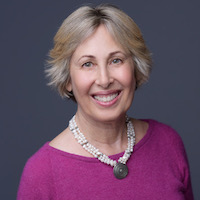
“We gain strength, and courage, and confidence by each experience in which we really stop to look fear in the face…we must do that which we think we cannot.” ~ Eleanor Roosevelt
~
When we live within a self-designed comfort zone of habit, everything outside of that is experienced as a threat, and fear arises.
As long as this situation is hidden from our awareness, we can only react to what we perceive as a threat.
What can we do?
We can develop awareness of what we are thinking and doing habitually. If we do that, we can bring a breath of fresh air into this stuffy world in which we have been living, and we can begin to see the possibility of making a different choice—of not reacting.
Who reacts? Not me!
When we are reacting, we usually don’t realize it. A habitual pattern takes over our behavior. We each have our own set of behavior patterns—which are possible to see. One way to do this is to clear away the confusion in our mind that hides these reactive impulses through the practice of mindfulness meditation.
Short Mindfulness Meditation Instructions.
>> Take a comfortable sitting posture where you can feel alert and relaxed at the same time.
>> Notice how your body is feeling—connect to the ground beneath you and the space you are in.
>> Bring your attention to the feeling of your body breathing—just simply be aware of your breath.
>> When your mind wanders to other thoughts, just gently come back to noticing your breathing.
>> Relax and enjoy the break!
What we can realize from our reactions.
Over time, the practice of mindfulness—where we see our own thoughts, but are not caught by them—reveals our personal reactive triggers. Once we see what our triggers are, and how they set our reactions in motion, we have created the space and opportunity to change.
We may even realize that we operate with a different set of behaviors when we are at home or with close friends compared to when we are at work. It is possible, even likely, that fear is a more constant companion at work than we even realize, and that we don’t know how deeply it has been affecting our behavior.
This fear is not our enemy.
Fear is really a hallmark of intelligence—it reveals where to look more deeply. When we are open to the big picture, to the interdependence of all the factors that come together in each instant, it is not illogical that we may want to withdraw. We live in what is sometimes called a “VUCA” world (volatile, uncertain, complex, and ambiguous), and that can be scary.
Fear constricts.
Fear closes us down. But we have the capacity to stay open, strengthen our cognitive functioning, and reduce the reactivity of the fear impulse. We can develop that capacity through mindfulness practice. We can utilize these results in any moment by taking a breath and a pause, and allowing even small moments of mindfulness to ventilate our day.
Smile at fear.
Buddhist meditation master Chögyam Trungpa offers us the phrase “smile at fear” as an alternative to being ruled by it. He suggests that in practicing mindfulness, and in looking at what closes our hearts, we are expressing the ultimate courage—that of “not being afraid of who you are.”
If we can look directly at our lives, including our work lives, we can begin to experience the challenging scenarios of our life for the wisdom they hold. This takes genuine courage—courage that starts with that willingness to look more deeply into our own minds and hearts.
Don’t worry, be happy.
When we can’t control our busy thinking mind, it can lead to a feeling of constant worry. Worrying is a pervasive habit that keeps us busy, and that also can prevent us from putting the little things into perspective. We can recognize and curb our worry by seeing it and developing a sense of humor about how amazingly creative our imagination must be to create those ruminative scenarios. Then we have the choice to stop, breathe, and not react to every concern that pops into our head.
Take a courageous look at what scares you.
Mindfulness will certainly lessen our anxiety, because it will help us release ruminative and unhelpful thoughts by becoming aware of them—and of course we don’t want to live in a perpetual state of anxiety. Yet closing ourselves off to all messages that make us anxious or fearful is not always the courageous choice, and it won’t help us express our highest potential and vision.
Anxiety can teach be a teacher.
For example, anxiety over not meeting a deadline can be a nudge to ask for assistance on that project. Anxiety about our job security can inspire us to set up an appointment with our boss to discuss how we can further meet the needs of our organization. We can use our anxiety to move forward into action if we act with courage and step out of habit.
Let mindfulness help you.
If we want to look under the surface of our habitual behavior, we need the tool of mindfulness, and additionally the tools of gentleness, openness, and bravery. In my next posts, we will explore practices that access intuition, open the heart through compassion, and allow us to connect with a bigger unknown.
Together, these practices will enable us to harness and go beyond the subtle manifestations of fear that appear in our behavior. And when we are no longer ruled by fear, we will be able to ride the energy that is released.
~
~
~
Author: Gayle Van Gils
Image: Flickr/Andy Spearing
Editor: Travis May










Read 0 comments and reply